REGION RISING
FARGO’S BLOCK 9 CONSTRUCTION REFLECTS AREA’S ECONOMIC STRENGTH
ALSO IN THIS ISSUE: Construction updates from around the region PAGE 34





FARGO’S BLOCK 9 CONSTRUCTION REFLECTS AREA’S ECONOMIC STRENGTH
ALSO IN THIS ISSUE: Construction updates from around the region PAGE 34





Youwanttoput yourmoneytoworkbuilding acompanythatis acatalystfor growth fortheentirecommunity —likeFirstInternationalBank &Trust,a fourth-generation family-ownedbank founded110years agoon thebeliefthat“if acommunit yisthriving,thereisa good bankerin town.”Todoso, youneedpassionate leadership, aviewofthefuture,andJLGArchitects.Seehowthe27-branch,3-stateFirstInternationalBank& Trustislivingup to its nationalhonorofbeingnamed Extraordinar yBankofthe Yearat jlgarchitects.com/FIBT

How to minimizetaxes, avoid conflicts,and usebusiness entitiesaspart ofa farm estate planas well as otheroptions.







land.


Following the 1031 exchangeguidelines, Patrick will teach theimportanceof how to use1031 exchanges to defertaxes within realestate andland




How to Structure Legal Entities






Withmany estate planning questions, Stevewillprovide guidance and answersthat willhelpprovide reliefwith your retirementconcerns.






Strategies to Protectthe Family Farm ina Changing World
With extensive experience in realestate planningand valuable understanding ofland, John&Jessicawilldiscuss theimportance ofimplementingstrategies to protectthefarm’s wealthasrisksincrease.





Evolved.

Perfectlydesignedtothriveinitsenvironment. Adaptableenoughtoevolvewiththetimes. Smartsolutions,connectedcommunities.It'ssecondnatureatKLJ.
KLJENG.COM

If you set the bar at competence, how do you reach excellence?

IN THIS 2015 PHOTO, WORKERS BUILDING THE SANFORD MEDICAL CENTER IN FARGO INSTALL A FULLY EQUIPPED BATHROOM POD THAT HAD BEEN BUILT ELSEWHERE AND TRUCKED TO THE SITE. MODULAR CONSTRUCTION TECHNIQUES SUCH AS THIS ONE ARE FINDING THEIR WAY INTO MORE AND MORE OF THE REGION’S CONSTRUCTION PROJECTS. IMAGE: JLG ARCHITECTS

THIS RENDERING BY THE KILBOURNE GROUP SHOWS BLOCK 9, THE MID-RISE, MIXED-USE TOWER THAT’S NOW UNDER CONSTRUCTION AND WILL CHANGE THE SKYLINE OF DOWNTOWN FARGO, N.D. THE PROJECT INCLUDES HEADQUARTERS FOR R.D. OFFUTT CO., GROUND FLOOR RETAIL, A BOUTIQUE HOTEL, CONDOMINIUMS AND OFFICES AND A COMMUNITY PLAZA. PAGE 38.

A LOOK AT BLOCK 9, THE KILBOURNE GROUP/R.D. OFFUTT PROJECT THAT’S CHANGING THE SKYLINE OF DOWNTOWN FARGO, N.D.
MINOT STATE UNIVERSITY’S NEW MAJOR IN MEDICINAL PLANT CHEMISTRY OPENS DOORS IN THE PHARMACEUTICAL, CRAFT BREWING, FOOD SCIENCE AND MEDICAL CANNABIS INDUSTRIES
DEGREE FROM THE UNIVERSITY OF NORTH DAKOTA AND AN MBA FROM OHIO UNIVERSITY.






The daily newspapers in our region do a great job of covering business news. So what’s left for Prairie Business, which is published once a month?
The answer is trends. Every month, we try to spot not just what’s happening in local industries, but what’s on the horizon. What are executives talking about? What’s being looked at as a possible Next Big Thing?
This issue is full of such information. Start with the two columns that follow this Editor’s Note – one on augmented reality, one on unmanned aerial systems. As the columns suggest, we’re likely just at the start of the growth curves for those industries, and the prospects for both seem bright.
Yelp’s Monocle app already lets you point your smartphone at a business and see reviews. Soon to come: glasses that’ll show the same info in a heads-up display.
My guess is, the AR elevator’s going straight to the top. And the UAS elevator won’t be far behind, with many of the riders hailing from North Dakota.
Then there’s modular construction, the trend described in the Construction story that begins on Page 22. “In Japan, more than 15 percent of houses are built in factories,” Forbes magazine reported in February.
The U.S. has a lot of catching up to do, but I suspect we’re going to do just that.
Then there’s sustainable architecture, which has graduated from “trend” to “established practice” in a very short time. Which begs the question, what infant architectural practice of today is likely to be all grown up by 2029? Send me your thoughts, and I’ll try to incorporate them into our next Architecture & Engineering feature later this year.
Good reading, Tom Dennis
I welcome your feedback and story ideas. Call me at 701-780-1276 or email me at tdennis@prairiebusinessmagazine.com.

PUBLISHER KORRIE WENZEL
AD DIRECTOR STACI LORD
EDITOR
TOM DENNIS
CIRCULATION MANAGER BETH BOHLMAN
LAYOUT DESIGN ANNA HINSVERK
ACCOUNT MANAGERS
NICHOLE ERTMAN 800.477.6572 ext. 1162 nertman@prairiebusinessmagazine.com
PETER FETSCH 800-477-6572 ext. 1172 pfetsch@prairiebusinessmagazine.com
Prairie Business magazine is published monthly by the Grand Forks Herald and Forum Communications Company with offices at 375 2nd Avenue North, Grand Forks, ND 58203. Subscriptions are available free of charge. Back issue quantities are limited and subject to availability ($2/copy prepaid). The opinions of writers featured in Prairie Business are their own. Unsolicited manuscripts, photographs, artwork are encouraged but will not be returned without a self-addressed, stamped envelope.
SUBSCRIPTIONS
Subscriptions are free www.prairiebusinessmagazine.com
ADDRESS CORRECTIONS
Prairie Business magazine Box 6008 Grand Forks, ND 58206-6008
Beth Bohlman: bbohlman@prairiebusinessmagazine.com
ONLINE www.prairiebusinessmagazine.com




GRAND FORKS, N.D. – The state of North Dakota really has the complete picture of unmanned aircraft systems (UAS), and more pieces of the drone jigsaw puzzle than are possessed by any other state.
On Christmas Day 2015, the New York Times dubbed North Dakota “The Silicon Valley of Drones.” The moniker is appropriate, but we still should recognize that the state of drones in the commercial sector is a fledgling one, while Silicon Valley – with its billions upon billions of dollars of economic impact – is extremely well developed.

Of course, the true Silicon Valley in California had humble beginnings, too. When we think about the early days of Silicon Valley, we should recall the Homebrew Computer Club, garage startups and Fairchild Semiconductor, which grew from 12 to 12,000 employees. It would do North Dakota good to consider its present UAS cluster as sitting where
the then-coalescing personal computing ecosystem was, albeit disproportionately, in the late 1970s.
Another interesting historical comparison of the budding commercial UAS industry belongs to retired Air Force Lt. Gen. David Deptula. “Where we are, in terms of unmanned aerial vehicles, is about the same place we were with biplanes right after World War I,” Deptula says in “The Rise of the Drones,” a 2013 PBS documentary.
“We are at the very early stages of realizing what the potentials of unmanned aerial vehicles really are.”
Aviation boomed after World War I, and Silicon Valley boomed after its ARPANET (the predecessor to the Internet) days. What one should draw from Deptula’s words is that UAS in North Dakota is poised for an upswing to rapid growth.
Huge injections of venture capital didn’t
become the norm in Silicon Valley until well into the 1980s and ’90s. That’s why North Dakotans should be celebrating the passage of HB 1018 in the recent legislative session. The bill’s $33 million for a statewide network of beyond-visual-line-of-sight (BVLOS) infrastructure is the best way for North Dakota to capitalize on its critical mass of UAS-oriented entities.
Gaining BVLOS at that scale could be as important to North Dakota as the semiconductor or microchip was to Silicon Valley. And while it can’t compare with the massive private investments that startups acquired in California, the progressive step the North Dakota Legislature has taken is certainly a force multiplier for the state’s UAS community.
North Dakota UAS begins with, and in many ways centers around, the RQ-4 Global Hawk mission at Grand Forks Air Force Base. The bright future for UAS in North Dakota was highlighted by Air Force Secretary Heather Wilson’s recent visit to the base, where she announced that all Global Hawk aircraft in the service’s inventory would now report to the base and then up to Air Combat Command.
This makes Grand Forks Air Force Base “America’s Global Hawk Base,” as well as the “Base of the Future.”
The Grand Sky UAS tech park, still the only one of its kind in the United States, is attached to the base. It helps bridge the gap between the defense and commercial uses of the largest unmanned aircraft systems in existence. And in 2009, the University of North Dakota launched the first bachelor’s degree program for UAS in the country. The university continues to pioneer UAS in higher education on a global level.
Headquartered at UND is also the Northern Plains UAS Test Site, which was designated by Congress and the FAA and is one of only seven test sites in the country.


The UAS moxie shown by these organizations also helped establish SkySkopes in the North Dakota communities of Grand Forks, Minot and Williston. SkySkopes – one of the top few UAS flight operations internationally – along with the base, the test site, Grand Sky and UND, will see increases in UAS operations due to the coming expansion of beyond-visual-line-of-sight capabilities.
Through this cluster, North Dakota is likely in the best position in America to commercialize the benefits of BVLOS, which is, as one analyst put it, “the most talked-about concept in the commercial drone world today.”

 Matt Dunlevy President and CEO SkySkopes
Matt Dunlevy President and CEO SkySkopes
Grand
Forks, N.D.matt@skyskopes.com
BISMARCK, N.D. – Augmented reality was once an expensive, elaborate technology that only global industry leaders could harness as part of their portfolio or strategy. Only within the past decade have (1) more companies started to invest in AR, and (2) more people started to actively seek out AR experiences. Since its start in research labs of the 1960s, AR technology has advanced in ways that have reduced its costs and enabled access for a wider audience. And since the early 2010s, AR has started to crop up more frequently, in everything from sportscasts to advertisements.

Today, AR is seeing its strongest growth yet, both in popular culture and in business. The commercial embrace of it is on pace with other high-tech innovations such as 3D
printing and artificial intelligence. A survey from ResearchandMarkets.com suggests that the global AR market will grow to more than $94 billion by 2023.
This encouraging statistic might be enough to make some want to include AR in their business strategy. But before adopting AR, it’s important to understand what AR is, why its popularity has grown and how it will be deployed in the coming years.
AR is any interactive experience that overlays computer-generated information (most commonly visuals or sounds) onto a real-world environment. The results can be stunning creations that merge digital and physical spaces.
Simply put, AR delivers experiences that were previously impossible to create.

The hardware required to support augmented reality was once a major investment: something that only corporate giants such as Disney or BMW could afford. While this led to exciting theme park rides and never-before-seen advertising, there was still another big barrier keeping most organizations away from implementing AR, and that was the lack of accessibility for customers. Consumers (and business buyers) had to go somewhere to experience AR.
The arrival of smartphones with advanced processing power solved that issue. These devices untethered AR from fixed locations and made it available in new and exciting spaces.
This market trend, along with advancements in software development, have made mobile AR a cost-effective way to bring AR to millions of people. Today, companies can produce custom AR experiences that can be placed nearly anywhere in the world and activated through a person’s phone.
And while other AR devices (such as AR-enabled headsets) exist, they constitute a niche section of this technology. Overwhelmingly, individuals choose their smartphones to run app-based AR.
Many industries have capitalized on this trend. Some have even found major success, notably the commercial smash hit Pokémon Go, a video game released in 2016. More commonly, though, companies do not leverage this technology to its full potential. Mobile apps face three major usability factors. They must compete to:
• Be found and downloaded in an app marketplace
• Take up memory in a user’s device, and
• Keep a user’s interest.
If an AR app does not stand out in the crowded app marketplace, provide enough value in the limited space on a smartphone or make the user want to re-use it consistently, that app might be removed
soon after an initial download, or never be downloaded at all.


Though not as common, web-based AR is emerging as an alternative to app-based AR. This option requires no downloads and provides seamless AR interactivity.
As long as users can access the internet on their phones, they can access web-based AR experiences.
In North Dakota, McKenzie County Tourism understands the value of augmenting its content. The agency partnered with InnovatAR, the Bismarck-based tech startup that I founded, to include AR features in all-new marketing materials.

Within an AR-enabled brochure, audiences can view videos on the fly using their smartphone’s browser.
“AR-enabled print content will allow us to deepen the engagement opportunities,” said Doug Bolken, McKenzie County tourism director.
“The videos we’ve produced can now be connected within our printed visitor guides in a cost-effective way to fully utilize our resources.”
Mabin is CEO and founder of InnovatAR, a tech start-up that provides clients with web-based augmented experiences. For more information on fitting AR into a business strategy, visit innovatar.io.

As Region 8 administrator, Dan Nordberg oversees delivery of the U.S. Small Business Administration’s services in North Dakota, South Dakota, Wyoming, Utah, Colorado and Montana.
A Colorado State University graduate, Nordberg served in the Colorado House of Representatives from 2013 to 2018 and is a former business development specialist at a resort hotel in Colorado Springs. He spoke with Prairie Business about the SBA, where he has served as Region 8 administrator in Denver since early last year.

TELL US ABOUT THE SMALL BUSINESS ADMINISTRATION AND THE THREE C’S.
A.The Small Business Administration’s mission is to provide small businesses with access to the Three Cs, which are:
• Capital
• Counseling, and
• Contracts.
Perhaps what we’re best known for is capital. In partnership with private lenders, we offer a number of loan programs to provide access to capital to aspiring entrepreneurs who may not otherwise be eligible for conventional lending.
A.
What happens is, they’ll go to a private lender that is an SBA lender. We do this in partnership with our lenders in the private sector.
So, the entrepreneur will go in, talk with a banker, look at what avenues for access to capital might be best for their business. And oftentimes for smaller businesses, SBA loans are an attractive option.
If the borrower goes that route, we in turn will guarantee the loan to make it a more attractive proposition for the lender. The point is to help the person get started on the path to entrepreneurship.
8
for the U.S. Small Business Administration, describes the agency and the many services it offers
Many entrepreneurs will spot a great opportunity and say they’d like to start a business, but they don’t know where to begin. For them, there is the Small Business Development Center network, which serves as our point of entry to counseling.
The centers offer free one-on-one counseling and low-cost training services. They can help business owners draft a business plan, learn the licensing, tax and regulatory structure in their area, and really answer those entry-level, starting-a-business questions that can sometimes trip entrepreneurs along the way.
We also have another network of services called SCORE, the Service Corps of Retired Executives. It’s a volunteer-driven organization of retired executives who volunteer their time and offer their expertise to aspiring entrepreneurs to give them guidance and counseling.
And we have a service called PTAC – the Procurement Technical Assistance Centers. That segues into the third C that you mentioned:
The federal government is the largest purchaser of goods in the United States. And with that, the government has a goal of awarding 23 percent of all of its contracts to small businesses.
That’s a fantastic opportunity if you are a small business. However, getting into the federal procurement pipeline can be confusing, and you need some assistance navigating the rules and regulations of how to do so. That’s where our friends at PTAC can really help.
A.Yes. At the PTAC nearest you, you’d meet with a representative who would provide those counseling and support services to get into the procurement pipeline.
A.Absolutely, and they’re available to the full gamut of businesses, whether it’s a manufacturing company in Fargo or a small mom-and-pop restaurant in Dickinson, N.D. That’s where it’s really neat for us at SBA, because we help such a wide variety of businesses.
And speaking of rural businesses, my No. 1 priority as regional administrator is to help bridge the gaps between urban and rural population centers. In other words, how can we ensure that a business owner in Dickinson has the same access to capital, counseling and contracting opportunities as their counterparts in Sioux Falls or Bismarck?

I’m proud to say that we are really putting that into motion and working hard to accomplish that goal. Because we recognize that even though North Dakota has record low unemployment, not all communities are the same, and there are some cities that are struggling in North Dakota.
MORE ON: Page 18
At the forefront is the memorandum of understanding that the SBA signed with the U.S. Department of Agriculture last year. The idea is to marry our services as well as our capital access programs to better meet rural markets’ needs.
So right now, and in partnership with USDA, we’re going to those rural communities and jointly presenting on our Capital Access programs. We’re telling people, “SBA might be able to best serve you in this area, but USDA might be a better match in that area.”
It has been great to see two federal agencies with multi-billion-dollar capital-access programs working together give entrepreneurs better access to capital.
We are going to be doing joint events – kind of Rural Roadshows – leading into the summer, in various parts of the Dakotas and elsewhere. At these events, we’ll bring in lenders who make both SBA and USDA loans, and let them talk and answer any questions that prospective borrowers might have. As the lenders will explain, the processes have really been streamlined over the past few years.
Then we’ll also bring along our network of counseling resources. So we’ll have representatives from the local Small Business Development Center, we’ll have a SCORE counselor, we’ll have a PTAC representative who’ll give an overview of contracting opportunities with the federal government.
Typically, we’ll try to incorporate representatives from state and local economic development offices and local chambers of commerce, too.
The goal is for all of us to work in tandem, bring our resources to the forefront and have one unified voice.
After all, we’re all trying to help entrepreneurs; we are all trying to help businesses. But oftentimes in years past, we haven’t done the best job of coordinating and working together, and this is an effort to do better at that.
Correct. The Veterans Business Outreach Center goes to military installations and offers courses not only to soldiers who are transitioning out of the military, but also to military spouses. We teach courses on how people can use the skills they’ve learned in the military to start their own small businesses. Likewise, as soldiers are being transferred from one installation to another, sometimes spouses can experience unemployment or underemployment, especially if they were licensed in a different state. We offer courses that are open to veterans and military spouses to help them get the lay of the land, discuss what opportunities might exist and figure out how best to use the skills they have.
A.Here in the United States, we have more than 30 million small businesses. They are the backbone of our economy. And having an agency at the federal level that advocates on behalf of those businesses and promotes the great work they are doing is essential. For example, at SBA we have both an Office of Advocacy and an Office of the Ombudsman. The Office of Advocacy serves a crucial role for small businesses, because as regulations are being considered and drafted by federal agencies, the office holds hearings with small businesses around the country. The idea is to get those businesses’ feedback in order to help the agencies draft and shape the proposed rules. Then once the rules have been put in place, the Office of the Ombudsman continually reviews them to make sure they’re not too burdensome on small businesses. So, when an industry speaks up about a regulation that already has been put in place, the ombudsman will take those comments and fight on the small businesses’ behalf.
Those are two critical functions. Again, given the footprint that small businesses have in our country, we absolutely have to have a federal agency that advocates those businesses’ behalf. And I’m proud to say that’s exactly what we do.
Tom Dennis Editor, Prairie Business tdennis@prairiebusinessmagazine.com701-780-1276







WhenHeyer Engineering President Jim Heyer got his career start at a large architectural-engineering firm back in the late 1970s, it didn’t take him long to realize his ambition was leading him in a different direction.
Just a few years out of college in 1983, at age 29, Heyer decided to start his own structural engineering business in his basement, at the same time he and his wife Sherry were raising two daughters, Lisa and Dana, and an infant son, Ryan (youngest, Kylie, came later).
Jim Heyer, President“I learned a lot from my mentor Paul Jacobson and Mark Foss of Foss Engelstad Foss at the time,” Heyer said. “But there were a lot of things I wanted to do differently on my own, so that’s how Heyer Engineering got started.”
Six months after opening, the then-new entrepreneur and father moved into an office outside of his home after landing one of his first big projects, the Midwest Federal Office (now the Bell Bank building) at 3100 13th Ave. S., in Fargo. “It will always be my favorite project,” Heyer said.

Reflecting on the past 40 years of my career, there are three things that stick out in my mind: The first is all the amazing and talented people who work with us now and the past. In addition, I’m grateful for all the great clients and business associates we have been fortunate enough to work with, some who have become close personal friends.
Secondly, I’m blessed my son Ryan has adopted a love for this business, similar to me, and how satisfying it is to watch him grow and evolve into his career.
Finally, I’d like to express my gratitude for the undying support, advice and confidence given to me by my wife Sherry. She has been and always will be a large part of this firm.
Today, Heyer Engineering is a thriving structural engineering firm working on projects from coast to coast. The firm currently has six principal owners and 36 employees who work from offices in Fargo, Sioux Falls, SD, and satellite locations in Corona, Calif., and Minneapolis.
The firm’s portfolio includes many notable buildings in the Red River Valley corridor, including Essentia Health on 32nd Avenue in Fargo, Tharaldson Ethanol Plant in Casselton, University of North Dakota’s Ralph Engelstad Arena & Medical School, North Dakota State University’s Bison Sports Arena, STEM building and Newman Outdoor Stadium, The Hjemkomst Center in Moorhead, Minn., as well as numerous primary and secondary schools, and churches.
Currently, many projects are planned or in the works for the Heyer team, a growth projection that recently led to a corporate reorganization. For Heyer, who is approaching retirement age (though admits he’ll likely never fully retire), that meant naming five partners from within the firm: Dave Bruns, Jason Skiple, Eric Greiff, Ryan Heyer (Jim Heyer’s son) and Darren Neff.
Dave Bruns, Principal and Senior Structural Engineer Jason Skiple, Principal and Senior Structural Engineer Eric Greiff, Principal and Senior Structural Engineer Darren Neff, Principal and Senior Structural EngineerHeyer Engineering has the advantage of being owned by principals who collectively have more than 160 years of experience in the industry. It’s a leadership team that understands the nuances of business and how to succeed operationally through collaborative decision-making.
“Even though we’re all different and we have different work styles and thought processes, we all have similar personalities, and we’re respectful and open to one another’s ideas,” said Principal and Senior Engineer Jason Skiple, who has been with Heyer since 1996. “We love coming up with different and exciting alternatives to various challenges by incorporating
creativity, the latest technologies and challenging design.”
Their close-knit culture is part of what sets the firm apart, according to Principal and Senior Structural Engineer Eric Greiff, who joined Heyer Engineering in 1999.

“We have a highly collaborative team, with a lot of different ways of thinking,” Greiff said. “In reality, you’re not just working with one of us, you’re working with the whole team. We’re looking for steady and sustainable growth. We’ve never had layoffs when there’s a slowdown. We hire for the long-term. It’s what we do.”
Due in part to the collaborative structure and focus on steady growth, Heyer Engineering enjoys a 90 percent return-client base. “We let lead-
ership focus on the business while allowing our team to do the work they know and love. We want to be able to step back as managers and lead our team so we can make large-scale decisions that make the most sense for the company,” Principal and Structural Engineer Ryan Heyer said.
Ryan, Jim’s son, says he naturally transitioned into a leadership role with the company.
“I spent a lot of time at an early age in my father’s office,” Ryan Heyer said. “Doing odd jobs here and there, delivering documents, mailing, filing, drawing pictures on his employees’ white boards, etc. It seemed like a good profession and I saw my father as a very prominent figure in the community. I wanted to be that person.”
Even though we’re all different and we have different work styles and thought processes, we all have similar personalities, and we’re respectful and open to one another’s ideas. We love coming up with different and exciting alternatives to various challenges by incorporating creativity, the latest technologies and challenging design. JASON SKIPLE, Principal and Senior Engineer
► Principals: Jim Heyer, Dave Bruns, Jason Skiple, Ryan Heyer, Eric Greiff, Darren Neff
► Established: 1983
► Headquarters: Fargo, ND



► Industries: Athletics, Industrial, Commercial, Health Care, Religion, Education, Government, Hospitality

► Office locations: Fargo, ND, Sioux Falls, SD, and Corona, Calif.
► Number of employees: 36
► Combined years of experience: 250+ years
Principal and Senior Structural Engineer Darren Neff, the newest addition to the leadership team, joined the firm in 2017. From his vantage point, he believes working for and working with Heyer Engineering is an opportunity unmatched in the communities they serve.
“Being the new person, I think we
do a very good job of being flexible and listening to the client and meeting their needs, and we love to keep learning,” Neff said. “As architects get more and more creative, the solutions we bring to the table need to be more and more creative. As a result, I’ve gotten to work on projects I don’t think I would have been able to work on had I not worked here.”
Principal and Senior Structural Engineer Dave Bruns, who’s been with Heyer since 1984, said the firm has almost doubled in growth the past three years alone, and he and his partners don’t see that changing anytime soon.


In fact, the firm is about to break ground on a new building space located on 42nd Street South in Fargo.

“In future years, there will be a time where the present partners will be looking at taking a step back, so that the next generation can evolve into the ownership arena. The fortunate thing is that the plan for that to happen is in place,” Bruns said.
For more information or to contact Heyer Engineering, visit www.heyerengineering.com
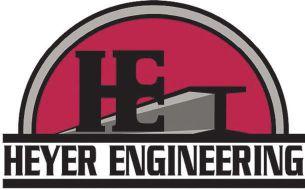
GRAND FORKS, N.D. – There is a construction process that:
• Is projected to grow at close to 7 percent a year into a $157 billion market by 2023
• Might just “trend toward nearly 100 percent market share of all large commercial projects,” one real estate and venture capital CEO says
• Already accounts for elements of as many as 84 percent of Swedish detached homes
• Is described by the chief development officer for Marriott International, the hotel chain, as “the future of how we are going to be developing
buildings across the United States, Canada and the world”
• Could help ease both the workforce shortage and affordable housing crises in America, and
• Has a history that links tall ships, the California Gold Rush, Sears catalogs and Montreal’s Expo ’67.
Interested?
Welcome to modular construction, a technique that’s growing as architects, contractors,

developers and property owners see how it helps them solve problems.
In modular construction, a building’s main components get built offsite, then are transported to the site for final assembly. It’s an expanded version of prefabrication, an already-common construction technique.
Wells Concrete precasting more than 5,000 stairs, walkways and other elements in its Maple Grove, Minn., factory in 2016, then trucking those components to U.S. Bank Stadium in Minneapolis, which was being built? That’s prefabrication.
Some 354 factory-made housing cubes being stacked to form Habitat ’67, an architectural landmark from Montreal’s Expo ’67 that’s still occupied today? That’s modular construction. Together, the trends are “touching all aspects of the construction industry, from residential all the way to the larger buildings,” said Norma Nusz Chandler, an instructor with the South Dakota State University Department of Construction and Operations Management, in an interview with Prairie Business.
“They really are convenient and practical methods. And with the challenge of workforce shortages, looking for ways to streamline construction is helpful.”
In the 1600s, a dissembled house that had been sent via tall ship from England was reassembled in the United States, the Modular Building Institute reports. In 1849, Gold Rush California took delivery of 500 homes that had been made in a factory in New York.
Between 1908 and 1940, Sears, Roebuck & Co. sold 70,000 kit homes by mail order, shipping by rail the raw materials – lumber, paint, nails – and a 75-page instruction book to buyers across the United States.
And today, “you may have seen a modular home going down the road,” as there are several factories in our region that make them, said Jeffrey Morrau, principal of Artekta Architects in Fargo, N.D., which specializes in modular construction.
But make no mistake, you probably didn’t recognize the home once it was assembled, because modular buildings these days are almost indistinguishable from structures that are built on site.

So, too, are the many buildings that have been or are being built using modular components. These include including Sanford Medical Center in Fargo – whose builders hoisted more than 300 factory-made bathrooms into place during construction in 2017 – and the new Clay County Correctional Facility in Moorhead, Minn., whose cells were prefabricated in Georgia and were shipped three on a truck to Moorhead.
Modular construction offers several advantages, Morrau said.
One is speed. If you can build the modules (such as the Clay County jail cells) while the site is being prepared, you can save time. This lets builders complete the structure in maybe half the time that an on-site build would require.
Another is quality control. “Because you’re indoors in a factory, you can keep building your modules in the middle of a snowstorm, and you also can build them 24/7,” Morrau said.
“If you’re working with wood, it stays dry, as does everything else. It doesn’t get wet as it might when it’s stacked up on a job site.”
Consistency is an asset, too. In Marriott’s case, “think of their challenge when they’ve got one
hotel going up in Denver and another in Des Moines,” Morrau said.
“Marriott wants the rooms to be identical, but if the company builds on site, it’ll probably use completely different work crews. And it’s hard for different contractors to replicate an identical product.”
Building the rooms in a factory eliminates that problem. “This way, the consistency is literally perfect; everything is being built by the same crew,” he said.
“The on-site contractor is simply patching things – plugging the modules in, so to speak.”
Those factors help explain why hospitality companies have been among the first to embrace modular construction, said Nicole Washburn, principal and director of operations at JLG Architects in Minneapolis.
“Those businesses need to get to market fast when they want a new hotel to come online,” Washburn said.
The sooner they can open, the sooner they can start hosting guests in the new facility and recouping their investment, she said.
Since 2015, developers have built 31 Marriott hotels across North America using prefabricated guest rooms and bathrooms. And in April, Marriott announced plans to build the world’s tallest modular hotel: a 26-story structure in New York City whose 168 rooms will be built in Poland and shipped across the Atlantic to Manhattan.
MORE ON: Page 24
Workforce is another advantage Marriott and similar firms are discovering, Washburn said.
“As you know, trade organizations are having a hard time getting people to learn new trades,” she said.
“So a benefit of producing within a factory is that training can be very focused.” Plus, the factory workers themselves get to work in a controlled environment, meaning “they’re not trying to frame a building or install a window in bad weather, such as we have during our winters.”
Modular construction’s disadvantages can include building-code confusion, Morrau said.
“Typically, modules are inspected in the factory by a certified third-party inspector,” he said.
“So, now you’re introducing that new element into an established inspection
system like you have in most metro areas. It gets a unique reaction, because the on-site inspectors sometimes don’t know how to deal with the pre-certified assemblies that start showing up.”
Interestingly, cost is neither an advantage nor a disadvantage at this point, Morrau said, though the “advantage” side seems to have the momentum. The transportation costs of getting the modules to the site can eat up the labor-cost savings that result from quicker and easier assembly.
In California, modular-component manufacturers have responded by opening factories closer to high-growth areas, thereby cutting the transportation costs. Expect that to happen nationwide as awareness of modular’s advantages grows, Morrau said.
In downtown Des Moines in 2017,
contractors unwrapped and installed about 300 factory-built bathroom pods during construction of an eight-story Hilton hotel, the Des Moines Register reported.

The process was not new; “Disney was stacking prefabricated resort rooms as early as the 1970s,” the newspaper reported. But at the time, it was new in the region. As a project manager told the Register, “We’re not reinventing the wheel. We’re just bringing it to Iowa.”
And now it’s being brought to Minnesota, North Dakota and South Dakota as well.
Tom Dennis Editor, Prairie Businesstdennis@prairiebusinessmagazine.com
701-780-1276
We’rehonoredtoliveandworkinthiscommunity,andtohelp shapeitforgenerationstocome. We’rededicatedtoenhancing thevalue,vibrancyandstabilityofdowntownSiouxFallswithnew optionsforliving,shoppinganddining...andsomuchmore.






Visit lloydcompanies.com tofindoutmore.



OpeningJuly1,2019
Modern,urbanliving,over200lofts,diningandshopping withacourtyard,fitnesscenter,yogastudio,pool,dog parkand92,000squarefeetofundergroundparking.The CascadeisashortwalkfromFallsPark,GreenwayBike Trail,andacrossfromtheLevittShelloutdoormusic venue.Downtownlandmarkslikethe WashingtonPavilion andSculpture Walkarejustafewstepsaway.


BeginningSpring2020
Anchoredbyadestinationhotelandconventioncenter, theplannedmixed-usedistrictintheheartofdowntown willtransformtheiconicSiouxSteelproperty. Witha nodtowardculturaldiversityandiconicurban architecture,expectofficespace,street-level retail, restaurantsandunique residentialoptions.

GRAND FORKS – Jim Galloway agrees:
“In architecture these days, there are fads, there are trends and there are standard practices,” said Galloway, architect and principal at JLG Architects in Grand Forks.
“Sustainability is one of those that now is a standard practice.”
Paul Breiner agrees:
“Absolutely. It’s really not a trend any more,” said Breiner, project architect with Ackerman-Estvold in Minot.

“In fact, while it might not be the core, it’s certainly one of the core elements of architecture today.”
And Richard Graves, associate professor and director of the Center for Sustainable Building Research at the University of Minnesota School of Architecture, agrees, too.
“Here at the architecture school, we created
By Tom Dennisa degree more than 10 years ago – a master’s in sustainable design,” Graves said.
“It was cutting edge, and one of the first such degrees in the country.
“But we just redid the curriculum of the architecture school, and now, all of those elements that 10 years ago were cutting edge are part of the core curriculum.
“We feel that all of those things, every architect needs to know before leaving the University of Minnesota.”
But here’s the key: while the original elements of sustainability – notably, energy efficiency – now are standard practice, other elements have arisen that are the new cutting edge.
This story will explore that evolution. Today, sustainable architecture considers the
building’s impact not just on the owner’s wallet, but also on the occupants and surrounding community; not just the presence of insulation and double-pane windows, but also the influence of daylight, solar panels, bike racks and low-flow toilets.
“These days, our students learn that architecture is about more than just designing things that are beautiful,” said Graves of the University of Minnesota.
“It’s about designing beautiful things that are driven by the kinds of performances we need in the future, both environmentally and socially.”
Built in 2013, the Gorecki Alumni Center at the University of North Dakota remains one of the few buildings in the state to be certified Platinum by the LEED or Leadership in Energy and Environmental Design program. That’s the program’s highest certification.
MORE ON: Page 28
ABOVE: THE WILKERSON COMMONS BUILDING AT THE UNIVERSITY OF NORTH DAKOTA IS ANOTHER BUILDING THAT INCORPORATES PRINCIPLES OF HIGH-LEVEL SUSTAINABLE DESIGN. ONE OF THOSE PRINCIPLES IS DAYLIGHTING, SHOWN HERE. IMAGE: JLG ARCHITECTS BELOW: THIS DIAGRAM SHOWS HOW A RAINWATER AND GREYWATER COLLECTION SYSTEM CAN SIGNIFICANTLY REDUCE A BUILDING’S WATER CONSUMPTION. IMAGE: CENTER FOR SUSTAINABLE BUILDING RESEARCH, UNIVERSITY OF MINNESOTA



Every year, third-year architecture students at North Dakota State University visit UND to tour the Gorecki building and Wilkerson Commons, a Silver-certified building. Which also is a sign of the times: “When I was at that point in architecture school, we never even talked about sustainability,” Galloway said. “It wasn’t on the radar at all.”
But what the NDSU students discover is worth the visit, because it shows how far sustainability has evolved beyond energy efficiency.
For example, “in the Gorecki building, the office interiors are all glass,” Galloway said. The design brings natural daylight to 97 percent of the spaces and greatly reduces the need for artificial light.
And in Sustainability 2.0, that matters. LEED’s point-based system evaluates not only energy use but also other factors, including whether occupants have access to daylight and outside views.
There are three reasons for the focus on daylight, said Breiner of Ackerman-Estvold. The first is aesthetic; daylight has been a factor in architecture for centuries, as the world’s cathedrals show.
The second is economic, as sunlight can cut lighting and heating bills.
And the third is comfort. “There’s a ton of research that shows that people work more productively and are more comfortable in a natural versus an artificial light setting,” Breiner said.
Breiner helped craft the National Energy Center of Excellence at Bismarck State College, another building that incorporates sustainable design. Besides daylighting, architects considered transportation – “we made sure we had a place where people could store their bicycles if they chose to ride to work,” Breiner said – recycled and low-emitting building materials for indoor air quality, water conservation and light pollution, among other factors.
“We were conscious of the light fixtures we’d select so we wouldn’t send light off-site,” he said.
“It’s not just the building itself. It’s how it treats the people inside as well as how it extends out and affects the community around it.”
Net zero construction is an even newer element of sustainable design. A net zero building is one with zero net energy consumption, meaning the energy used by the building equals the renewable energy produced on site, typically through solar or wind.
“That’s one of the things we’re seeing: a shift from energy efficiency to a goal of being carbon neutral,” Galloway said.
“We’re working on project right now in Colorado – a hockey arena at Colorado College, the goal of which is to be net zero.”
Details about the arena haven’t been finalized, but the Tutt Library at Colorado College achieved net-zero construction when it was renovated in 2017. The library earned this status by virtue of an 80-well geothermal energy field as well as rooftop and offsite solar arrays, among other factors.

All of the institutions referred to above are colleges or universities, and that’s no accident. For a big reason why energy efficiency – Sustainability 1.0 – now is a part of virtually all new construction is that it pays for itself in a short period of time. It makes clear economic sense, in other words. But the payoff for aiming higher – toward highlevel LEED certification or net-zero construction, for example – generally is longer-term.
And at this point, universities tend to be the owners who’ll spend extra to “go green.”
One reason is that high-level sustainability now is a part of colleges’ brands. It matters, especially when it comes to student and faculty recruitment.
“Students today are so much more sophisticated in picking one college over another,” Graves said. “They’ll ask about whether you have a sustainability program or not.” They’re drawn to colleges that make net-zero a priority.
“And once they’re here, they insist that the university walks the walk,” he said. “They want to know your carbon reduction plans – and not only for the existing campus but for new buildings as well.”
Now, here’s a prediction: Other industries will follow the path that higher ed is on.
Expect to see more companies touting their sustainable designs, in other words.
Why?
First, because the movement toward sustainable architecture shows no sign of stopping. Second, because social and environmental awareness now are important in corporate brands. And third, because the higher-level investments still can pay off – just not as quickly as laying fiberglass batting in the attic can.
“If I were to speak with some MBA students – the people who’re going to build and own buildings in the future – I’d tell them that high-performance and sustainable buildings are good business,” Galloway said.
“It’s in their interest; it helps their corporate reputations.” It also can enhance productivity, because most people perform better in a building with clean air, lots of daylight, a rooftop garden and other green features.
“I’d start that conversation early, because over time, I think they’d realize that this is just a good investment for them.”
Tom Dennis Editor, Prairie Business 701-317-5083tdennis@prairiebusinessmagazine.com






BISMARCK, N.D. – Collaborative divorce, hailed as a more civil and respectful approach to marriage dissolution, is gaining a foothold in North Dakota, particularly in Fargo and Grand Forks.
The process usually involves the divorcing couple and their respective attorneys, along with mental health professionals and financial specialists. All agree to a problemsolving methodology that looks for peaceful compromises and resolutions.
Collaborative divorce originated in 1990

with Minneapolis family law attorney Stu Webb, who, frustrated by the adversarial nature of traditional divorce, developed the family-friendly approach. Collaborative divorce now is popular in Canada, Europe, Australia and major U.S. cities. There’s no required standard for training in collaborative practice, but the International Academy of Collaborative Professionals has set standards that call on collaborative professionals to complete workshops, mediation training and continuing education.
The first collaborative law training session in North Dakota was held in 2011 with three Fargo practitioners in attendance. The following year, 17 lawyers, mental health providers and financial professionals were trained.
In September, the UND School of Law hosted a collaborative practice training seminar in Grand Forks for about 30 participants. About 100 North Dakota professionals, mostly attorneys, now have been trained in collaborative law.
The major difference between collaborative and traditional divorce is a pledge from all parties to not go to court.
“The U.S. judicial system is adversarial,” said Mike Gjesdahl, a Fargo family law attorney and president of the North Dakota Collaborative Divorce Group.
“It’s ironic that we attempt to resolve conflict by putting people in a conflict-based system.
“In a traditional divorce, the lawyer is the gladiator, the champion, the advocate for the client,” Gjesdahl continued. “In collaborative law, we put Mongo back in the cave and let our kinder instincts prevail.”
Gjesdahl, who heads Gjesdahl Law, a sevenattorney family law firm in Fargo, paints a visual picture to illustrate collaborative divorce. He explains that in traditional divorce, one person and his or her lawyer are on one side of the table, while the spouse and the spouse’s lawyer are on the other side.
In the middle of the table is the word, “versus.”
In collaborative divorce, in contrast, the couple and their attorneys all sit on the same side of the table. On the other side are the couple’s problems and issues.
The commitment to work through those issues is the reason mental health
professionals are the most important members of the team, said Tonda Mattie, a collaborative law attorney in Edina, Minn.
“If they don’t have the benefit of a mental health professional, their divorce will look just like their marriage: something’s not working, and that’s why they’re ending the marriage.”
In the collaborative process, the mental health professional is often called the “divorce coach.”
Mattie shares a suite of offices with about two dozen other professionals as part of the Collaborative Alliance Office, a one-stop-shop for collaborative divorce. The building houses attorneys, mental health professionals and financial specialists trained in mediation and collaboration.
Mattie joined the Collaborative Law Institute of Minnesota in 1992; it had been formed just two years earlier by Stu Webb and others. She has handled several hundred collaborative divorce cases.
Another characteristic of collaborative divorce is a child-centered focus. Minnesota psychologist Deb Clemmensen works full-time with parents and children as a collaborative neutral. A current board member of CLIM, she also works out of the
Collaborative Alliance Office and is one of the most senior collaborative law child specialists in the country.

Both Mattie and Clemmensen have led sessions in North Dakota as part of the CLIM training team.
In her initial interview with parents, Clemmensen asks, “What’s the story you want your children to tell about this divorce?” She’ll usually meet with the children separately, she says, but never before meeting with the parents first.
“I help parents compose a ‘We Statement,’ even though they’re in crisis, that would give their children a feeling of safety and hope, as opposed to confusion and conflict,” she said.
Mattie agreed. “We’re neutral coaches,” she said. “We’re there to promote communication and help the parties transition from a husband-wife relationship to a co-parenting relationship.”
Research completed in 2015 by the IACP showed a high satisfaction rate – 77 percent of 1,036 divorced individuals who were interviewed – with the collaborative process. Also, 78 percent of those who chose collaborative divorce said they did so because they felt it would be a more respectful process.
CLOCKWISE, FROM LEFT: TONDA MATTIE
STU WEBB, SHOWN HERE IN A 2018 PHOTO, IS THE MINNESOTA FAMILY LAW ATTORNEY WHO FOUNDED THE OUT-OF-COURT FORM OF DISPUTE RESOLUTION KNOWN AS "COLLABORATIVE DIVORCE" IN 1990. IMAGE: COLLABORATIVE LAW INSTITUTE OF MINNESOTA


BOTTOM RIGHT: DEB CLEMMENSEN
“When there’s respect, you’re far more likely to think clearly and communicate about the really important decisions you have to make that will affect the rest of your life,” said Clemmensen. But the collaborative process may be inappropriate for a couple when there is active addiction, an untreated major mental illness or “a deep wound due to a betrayal” involved, she said.
If either party decides to go to court, the collaborative professionals – including the attorneys – terminate their involvement. “This is an incentive to remain in the process,” Gjesdahl pointed out.
“You don’t want to go back to go and start over after you’ve invested considerable time and money.”
Gjesdahl is working to grow collaborative law across North Dakota. A major challenge is the state’s rural nature, as the collaborative process requires professionals who are likely to be found only in the larger cities.
“We’re introducing judges to it now, and we’re speaking to pastors and mental health providers,” he said. “We’re saying, ‘Here’s a peace initiative, a method of helping people get through a dark time in a respectful way.’”
For more information about collaborative law, visit: gjesdahllaw.com, collaborativedivorce.net, collaborativelaw.org or collabortativepractice.com.
Tom Regan
Freelance writer
Licensed addiction counselor and certified grief counselor Bismarck, N.D.

tregan@bis.midco.net
THIS INTRODUCTORY COLLABORATIVE PRACTICE TRAINING SESSION WAS HELD IN JAPAN IN DECEMBER. COLLABORATIVE PRACTICE IS SPREADING NOT JUST IN THE UNITED STATES BUT AROUND THE WORLD, THE INTERNATIONAL ACADEMY OF COLLABORATIVE PROFESSIONALS REPORTS. IMAGE: IACP










The 60,000 square foot building will feature seven new volleyball courts for Avera programs, physical therapy, a therapy pool, underwater treadmill and an exercise gym. It will be home to Athletic Republic, Avera’s sports performance training program in Sioux Falls, and is scheduled to open in December.
• Thomas Jefferson High School will be the fourth public high school in Sioux Falls, all four of which are named after presidents on Mount Rushmore. The $84 million high school will be built on the northwest side of town. Construction will start this summer, and the school is scheduled to open in the fall of 2021.
• Ben Reifel Middle School: In September, Sioux Falls School District voters overwhelmingly approved a $190 million bond to pay for three new schools, including Jefferson High (above) and Reifel Middle School.
Starting this summer, the middle school – which is named for the first person of Lakota or Sioux descent to serve in Congress – will be built on the far east side of town. It will open in the fall of 2021.
• Encompass Health plans to build a $15 million, 40-bed inpatient rehabilitation hospital at 4700 W. 69th Street, just west of the Avera Heart Hospital.
The Encompass Health Rehabilitation Hospital of Sioux Falls will bring about 83 fulltime jobs to the city. Construction is expected to start this spring, and the hospital will open next year.
• A $12 million operating-room remodel is underway at Avera McKennan Hospital in downtown Sioux Falls. Crews are building 20 operating rooms in the space formerly occupied by the hospital’s intensive care unit.
• A $12 million Avera Human Performance is being added to the Avera System’s Avera on Louise health care campus at 69th and Louise in Sioux Falls, SD.
• Main Avenue: This $10.5 million pavement reconstruction and infrastructure improvement project will be spread over two years. In 2019, the 50- to 60-year-old underground infrastructure will be replaced between the Red River and Broadway, and a roundabout will be built at the 2nd Street South intersection, among other improvements.
• A $20 million project will reconstruct 52nd Avenue South from 45th Street to 63rd Street. The project will upgrade a rural two-lane road to an urban, four-lane divided highway, with dedicated turn lanes and center median.


• Sudro Hall addition at North Dakota State University: This project includes a 74,000 square foot, six-story addition to the existing Sudro Hall, home of the university’s College of Health Professions. Construction is expected
to be completed in time for spring semester 2020. Cost: up to $28 million.

• Roberts Commons/Dillard/Kessler development in downtown Fargo: This fourphase project started in 2016 with a 455spot city parking garage. Phase 2, in which a mixed-use building wrapped the garage, was completed in 2018.
The Dillard building attached to the parking garage, with main floor commercial and 88 apartments, will be completed this year. Phase 4 is the Kessler Building, a mix of commercial, parking and apartments that’s expected to be completed in 2021. Total cost: More than $50 million.
• Block 9: An 18-story, mixed-use tower building with offices, a hotel, seven condos and a parking garage with an estimated cost of $110 million. Construction started in September 2018 and will be completed in 2020.
• Gateway to Science Building – science exploration facility: This proposed 40,000 square foot building will house a main floor gallery exhibit space, an education wing and administration and support spaces.
The new building will be located along the bluffs overlooking the Missouri River and visible from I-94. If fundraising is successful, construction will start this year.
• 630 Main Apartments – three-story, mixed-use building in downtown Bismarck. This $8.2 million downtown infill project will provide 52 market-rate housing units and about 11,000 square feet of ground-floor retail space. Construction is expected to begin in the spring and continue for a year.

• Tesla Charging Stations – electric vehicle fast-charging station. Tesla has partnered with Pinehurst Square Shopping Center in northwest Bismarck to install up to eight new Superchargers in an existing parking area. The new chargers will provide electric vehicle owners a convenient charging station next to other retail and service amenities.
MORE ON: Page 36
TheBlock9projectistransformingthe skylineof Fargo-Moorhead. We areproud to beapartneronthisamazingproject.

www.mcgough.com building forthenext generation
MSUM’s constr uc tion management prog ramisrelevant andfocused with professors having avar iety of indust ry ex perience.Iapplied my knowledgeand sk illsimmed iately to my internship andnow myjob.
–NickHollaar’19
Construc tion Management, FieldEngineer, John T. Jones

MSUM Construction Management graduates enjoy 100% jobplacement andexcellent startingsalaries. Learnmoreat mnstate.edu/construction-management.

World’s fastest 64” roll-to-roll printer

Maximum speed of 1,710 square feet/hour for outdoor banner applications
UV gel technology
Up to 40% reduction in ink/printing costs compared to other roll-to-roll systems
Ideal for outdoor banners, indoor POP signage and wall converings
Fargo Grand Forks
Bismarck Minot
Fergus Falls
libertybusiness.com

• Edwinton Place – housing complex: The $10.3 million, four-story apartment building is under construction in south Bismarck. In partnership with the Burleigh County Housing Authority, the project will use a “Housing First” approach to provide 40 single-bedroom, transitional housing units for individuals experiencing chronic homelessness.
• Area 57 – mixed-use development, meaning the ground floor will be for commercial space, and the top floors for apartments. Preliminary construction work has started on two new mixed-use buildings that are Phase 1 of a planned six-building development in north Bismarck along East Greenfield Lane.
The buildings will provide residential, office and ground floor retail with underground parking, and are expected to open in 2020.
• Grand Forks Water Treatment Plant – Being built west of Grand Forks. When completed in 2020, the $150 million plant will have the capacity to treat 20 million gallons of water a day.
• UND student union – In November, University of North Dakota students voted to build a $80 million student union, and the process will start this summer.
The current student union will be demolished in July, and the new, 158,000-square-foot building should be finished in 2021.
• Red River Biorefinery – The $70 million, 80,000 square foot facility will turn 500,000 metric tons of sugar-beet waste and other agricultural byproducts into ethanol each year. The plant north of Gateway Drive should be completed by early 2020.
• UND Steam Plant – A public-private partnership is replacing the plant, which was built in 1909 and generates steam that’s piped throughout UND for heating. The new, $80 million plant will be completed by spring 2020.
The new six-story hospital will have more than 200 private rooms and a Level Two trauma center.
• Mouse River Enhanced Flood Protection Project – The billion-dollar, 20-year project is divided into eight phases, the first three of which are underway.

In May, a significant milestone was achieved when concrete was poured for the floodwalls that will be built along Minot’s 4th Avenue. The floodwalls will be built over the next two years.
• A favorable court ruling in May opens the door for the Northwest Area Water Supply project to be completed by 2023 or 2024, barring further delays.
The project would divert water from Lake Sakakawea to the area around Minot. Although much of the pipeline system has been built, litigation from downstream states and Canada had delayed construction.
Thanks to the ruling, “we will be making, hopefully, great strides in the next two to three years,” Minot Public Works director Dan Jonasson told the Minot Daily News.
• Demers Avenue reconstruction, Sorlie Bridge to North 6th Street: $8 million. This project is intended to reconstruct Demers Avenue “from face of building to face of building,” including grading, storm sewers, aggregate base, pavement, sidewalks, landscaping, street lighting, signing and traffic signals, the city of Grand Forks reports.
• University Avenue – Columbia Road to North 42nd Street, $11 million. A complete reconstruction of the pavement is underway and should be completed before the start of the fall semester.


• Altru Health System – Construction of Altru’s new $305 million hospital has begun. The new hospital is being built on the South Columbia Road campus where the main clinic used to stand. The steel superstructure will start to go up in October, and the building is expected to open in 2022.
• Minot Air Force Base – “Minot Air Force Base has $94 million in on-going construction projects,” the Minot Daily News reported in May.
The list includes replacing the 60-year-old original concrete of the mass parking apron, which is used by the base’s aircraft. The seven-year, $100 million initiative is currently in its second phase.
• Construction of Trinity Health’s new $350 million hospital campus in southwest Minot resumed April 26, a little over a month after propane tank fires and explosions shut down the site.
Originally, construction was to be finished in 2022. As of late April, site assessments were still underway, which meant Trinity Health officials weren’t able to predict the accident’s impact on the project’s timeline.

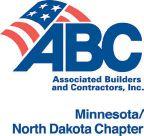
The purpose of the NRASP Annual Conference is to enhance the development of safety, health, and environmental professionals by providing quality speakers and learning opportunities.


Keynote speakers each day. Breakout sessions specific to:

- General Industry
- Construction
- Transportation
- Management
more info at www.nrasp.org/CONFERENCE
CELEBRATING 75 YEARS OFEXCELLENCE
Ulteigisa leaderindesignengineering,program management and technicaland fieldservices. We have75yearsofexperience and reputation,driving reliablesolutions.Ourteamofforwardthinkinginnovativeexpertsmakecriticalconnections,putting together thecomplex,multi-disciplinary strategiesyouneedin today’s changingworld.
WHERECOLLABORATIONANDENGINEERINGINTERSECT
UlteigprovidesexpertisethroughoutNorthAmericainthe LifelineSectors® ofpower,renewables,transportationandwater.

FARGO, N.D. – It’s a skyscraper. But it’s not a canyon wall. That’s on purpose. And it’s one more architectural element that shows the thought and planning that’s going into the Block 9 project, which is now under construction in downtown Fargo.
If you’ve ever visited downtown Manhattan or Chicago’s Magnificent Mile, you’ve no doubt noticed the “street canyon” effect. That’s the feeling you get when the street is flanked by skyscrapers on both sides, especially skyscrapers whose walls start at the sidewalk and soar up.
Block 9’s not like that, as you can see from the rendering below Instead, the tower is set back, while building’s lower portion – the podium – tops out at roughly the level of the surrounding buildings. Here’s lead architect SOM, a Chicago-based firm, on the reason why: “The tower is set back from Broadway to preserve the rhythm and character of the streetscape,” SOM’s website states.
“Its design references the architecture and materiality of neighboring buildings, while creating a slender profile on the skyline.”
MORE ON: Page 42
THIS RENDERING SHOWS THE BLOCK 9 DEVELOPMENT AS IT'LL LOOK IN LATE 2020, WHEN THE BUILDING IN DOWNTOWN FARGO, N.D., IS EXPECTED TO OPEN.



A CONSTRUCTION WORKER STANDS ATOP THE REINFORCING THAT WAS INSTALLED IN ADVANCE OF POURING THE FOURTH FLOOR OF THE TOWER. BOTTOM LEFT: THE PARKING RAMP’S STAIRWELL, SHOWN HERE, AWAITS ITS EXTERIOR WALLS.


RIGHT: CONSTRUCTION WORKERS STAND ON THE STEEL BEAMS USED IN THE BLOCK 9 PODIUM’S FRAMING.



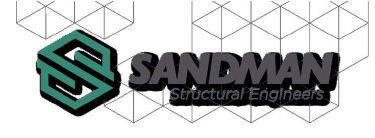







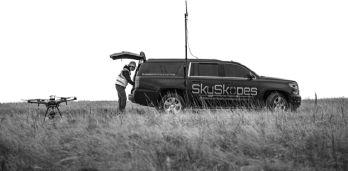





Other elements of the design reflect similar choices, said Keith Leir, vice president of development and construction for Kilbourne Group, which is partnering with R.D. Offutt Co. in developing the project.
Consider Block 9’s ground level, which will include retail shops as well as an open-air community plaza. “Pedestrian friendliness is something that we’re always striving for,” Leir said.
“We want to have an ‘18-hour city,’ which means that in downtown, you can get a cup of coffee early in the morning, have a drink or a late dinner in the evening, and it’s energetic and bustling and has lots of people all day and evening long.”
The community plaza alone, which will double as an ice-skating rink in winter, will host events that could bring in hundreds of thousands of people a year.
“We’re always very cognizant of what the pedestrian experience is going to be when you walk past the building,” Leir said.
Besides the retail components on the ground floor, Block 9 will serve as R.D. Offutt Co.’s corporate offices upon completion in late 2020. The building also will feature office and residential space as well as an Aparium Hotel Group boutique hotel.
 Tom Dennis Editor, Prairie Business 701-780-1276
Tom Dennis Editor, Prairie Business 701-780-1276
tdennis@prairiebusinessmagazine.com









ABOVE PHOTO: MINOT STATE UNIVERSITY
STUDENT ZACHARY SCHULLER MONITORS A SEPARATION PROCEDURE IN THE LAB.

IMAGE: MINOT STATE UNIVERSITY
In the fall, Minot State University in Minot, N.D., will start offering one of only two four-year medicinal plant chemistry programs in the nation. Chemists who can extract compounds from plants and analyze them can earn up to $70,000 right out of college, thanks in part to the burgeoning medicinal cannabis industry, Minot State reports.
In this interview, Prairie Business talks with Christopher Heth, assistant professor of chemistry, and Zachary Schuller, one of the school’s first students to declare a major in medicinal plant chemistry.
Christopher Heth: A little over a year ago, people on campus were exploring or brainstorming different ideas, looking for areas that we could expand our program offerings into. They were looking for things that our students might be interested in, that those students couldn’t get anywhere else and that would be useful for industries in the state and the region.
Those are the kinds of things that a state university, in particular, is doing all the time.
And with the significant uptick in medicinal cannabis across the country, including the legalization of medicinal cannabis in North Dakota, we wondered, is there something in that industry that we should be servicing?
So, a committee was set up, including me and a few other representatives from the sciences. Eventually, we all agreed that this was something we could do or even should do, especially in the area of the sciences.
Heth: Because while the pipeline of medicinal cannabis begins where the plant is grown and ends at the consumer, there are middle steps that require particular expertise and training, especially in the sciences. For example, some states (though not North Dakota) require that any medicinal cannabis products be in a processed or extracted form. We happened to be able to apply our expertise as chemists to train students to do that.
That’s the direction we decided to go, so we developed it as an additional option in our existing chemistry program. It’s got a little more math and a few more chemistry courses then our general chemistry option, but not quite to the same extreme as our professional chemistry option, which is designed for students who want to go to graduate school.
Heth: Yes. Our graduates could work in any industry that wants to extract useful materials from plants. For example, hops farming is a growth industry in North Dakota, in part because of the growth in the field of craft brewing. And the skills we teach are similar to those needed for extracting things from hops. Likewise, our students’ analytical skills are what people working in sectors of the pharmaceutical industry are using, so this would be a good launching point for people wanting to do that in their career as well.
Botanicals, health supplements, essential oils, the food-science industry – all of those are good fits. So, while most of the attention that the program will get is on medicinal cannabis, and rightly so, it does apply to other industries as well. Anything that has a plant in it.
But Minot State’s new major is a chemistry degree, not a ‘weed degree,’ a student and professor stress
• FoodserviceSupplies &E quipment



• JanitorialSupplies &E quipment
• Firs tA id &S afet yS up plies
• Pa ckagingMaterials
• Office Su pplies
CONVENIEN TO RDER IN G&D EL IVERY
Q. WERE YOU WORRIED ABOUT PUSHBACK, AND HAS THERE BEEN ANY BECAUSE OF THE SUBJECT MATTER?
Heth: Was there worry? Yes, actually. It was something we were concerned about; but we have been pleasantly surprised that we have not seen any negative reaction to it yet at all.
We were expecting at least some, and we were hoping it wouldn’t be much. But it has been less than I dared hope for.
So far, in fact, all the feedback that we’ve gotten has been positive.
Q. ZACH, WHERE ARE YOU FROM, AND HOW DID YOU WIND UP AT MINOT STATE?
Zachary Schuller: My family lives in Pennsylvania now, and I’ve lived around cities for most of my life. So when the time came for me to choose a college, I knew that I wanted to move to a place that was more rural. I wanted to see what that sort of life looks like. I also was interested in bioinformatics, because that field combines two areas – computer science and biological data, such as gene sequencing – that I had been interested in since high school.
A.
Schuller: Yes. You can’t be in a room these days without somebody in that room being affected by the opioid epidemic. It’s a huge problem, so I’m very excited about directing my studies toward what might be a possible solution.
Q. WHAT KINDS OF MATERIALS WILL THE STUDENTS IN THE PROGRAM BE WORKING ON?
Heth: Our plan from the get-go was not to use any whole-leaf cannabis of any kind. We are not set up to use cannabis without a significant investment in infrastructure, including security.
Q. HOW DID YOUR INTEREST IN MEDICINAL PLANT CHEMISTRY DEVELOP?
So when I found that Minot State had both the degree and the college environment that I preferred, it was stellar. A.
Schuller: I actually was at the airport and saw a news story that Minot State was getting a new medicinal plant major. At the time, there had been a lot of news around the country about medical cannabis and the fact that it was becoming a big alternative medicine for a lot of currently prescribed conditions.
Those include a lot of the conditions that opioids are prescribed for.
And because the opioid epidemic is so destructive and medicinal cannabis might prove to be a safer solution, it was almost like I felt a social call. I’m a person who is interested in science and data, and this seems like a field in which those skills could offer a lot of help to a lot of people.
For example, if we had to guard wherever we had the stuff stored, or if we had to make sure that students wouldn’t pocket a little bit of the material and smuggle it out of class – we didn’t want to deal with any of that.
Luckily, the techniques and skills are similar regardless of whether we are talking about tea leaves, or hops, or the cannabis plant – and also industrial hemp. So, our task got much easier with the 2018 Farm Bill, which essentially legalized hemp. With hemp, we don’t need to go through all of those hoops, because we’re not dealing with an illegal substance that we need to keep as close tabs on. That makes things much easier. We can extract the cannabidiols out of hemp and separate the various other compounds in there, many of which are identical or nearly identical to those we find in a cannabis plant.
MORE ON: Page 48
MINOT STATE UNIVERSITY STUDENT ZACH SCHULLER (LEFT) AND ASSISTANT PROFESSOR CHRIS HETH PREPARE HOPS FLOWERS FOR EXTRACTION IN THE LABORATORY. IMAGE: MINOT STATE UNIVERSITY

For most commuters near New Town, ND, taking the HWY 23B bypass will save some time, but when Senior Transportation Engineer, Tim Arens, PE, designed this route, he was more concerned with saving lives.

Developed to relieve heavy truck traffic through town, this highway provides a safer route protecting motorists and pedestrians alike.
Tim’s passion is protection; for the residents of New Town and those in every community we serve.
To learn more about the New Town Northeast Truck Reliever Route, visit our website at www.ackerman-estvold.com/projects

ABOVE: PICTURED HERE IN THE LABORATORY IS ZACHARY SCHULLER, ONE OF MINOT STATE’S FIRST STUDENTS TO DECLARE A MAJOR IN MEDICINAL PLANT CHEMISTRY. IMAGE: MINOT STATE UNIVERSITY BELOW: CHRISTOPHER HETH, ASSISTANT PROFESSOR OF CHEMISTRY AT MINOT STATE UNIVERSITY, WORKS IN A LAB WITH STUDENTS AT THE UNIVERSITY. HETH IS HELPING TO STEER MINOT STATE’S NEW PROGRAM IN MEDICINAL PLANT CHEMISTRY. IMAGE: MINOT STATE UNIVERSITY


Heth: If you make coffee or tea, you’ve already done some of those processes, just with different solvents. When we brew coffee, we take the plant material and we run a solvent – hot water – through it. While the solvent is in contact with the plant, some of the compounds in the plant dissolve and are carried away from the bulk fiber material.
The concept is literally identical here. The only thing that changes is what we use for solvents.
OF THESE YEARS?
Heth: We’re certainly hoping so. The industry is in an odd state currently, because the federal prohibition still is in place. That’s in direct contradiction to what the states are doing; I believe the number is 31 states plus the District of Columbia that have legalized medicinal cannabis now.
But because it is still federally prohibited, we have 31 cases of redundancy, because you can’t transport it across state lines without breaking federal law.
In other words, each state needs to develop its own industry. And a lot of them have realized that having people who can understand the scientific basis behind the process is desirable.
So we think the need for trained scientists to perform the extraction and analysis tasks is going to keep growing.
Tom Dennis Editor, Prairie Business tdennis@gra.midco.net701-780-1276
FARGO, N.D. — Paul Fuhrman has been hired as vice president of finance at Blue Cross Blue Shield of North Dakota. A certified public accountant, Fuhrman earned a bachelor’s degree in business administration from the University of Wisconsin in Eau Claire, Wis.

Prior to joining BCBSND, Fuhrman was the founder and president of Tonka Advisory, his own finance and accounting advisory company. He also had served as vice-president, treasurer and CFO of Jewelers Mutual Insurance Company in Neenah, Wis.

BISMARCK, N.D – Shila Thorson, a registered nurse and doctoral-degree student, has been named the new health information technology director for North Dakota. Thorson will be responsible for overseeing the Health Information Network, the state’s health information exchange. Thorson earned a master’s degree in nursing from the University of Mary and is pursuing a Ph.D. from the University of Colorado Anschutz Medical Campus in Aurora. She led the North Dakota Stroke Systems of Care, a public-private partnership that resulted in a Critical Access Hospital state designation and $3.4 million Helmsley Charitable Trust grant, a press release from the state of North Dakota reported. She also led the development of the North Dakota Cardiac System of Care and statewide Cardiac Ready Communities program.

MADISON, S.D. — Gov. Kristi Noem recently announced that interim Secretary of Education Ben Jones has been appointed as the permanent secretary.
The former dean of the College of Arts and Sciences at Dakota State University, Jones began serving in the state office in January. He had been dean at Dakota State since 2013. Judy Dittman, associate provost/title III director, will continue to serve as interim dean of the College of Arts and Sciences.
GRAND FORKS, N.D. – Darren Stinson has joined Anchor Marketing as the company’s newest account manager. Before joining Anchor Marketing, Stinson served as president of Ideal Aerosmith, a leading manufacturer of motion test solutions. At Ideal Aerosmith, he oversaw both quality management and the company’s human resources department.
 Paul Fuhrman
Ben Jones
Shila Thorson
Darren Stinson
Paul Fuhrman
Ben Jones
Shila Thorson
Darren Stinson

MINOT, N.D. – Houston Engineering, Inc. has hired Billy Preston as a survey technician.

Preston also is a licensed drone pilot and can operate a seafloor survey boat system. He grew up in Burlington, N.D., and previously worked as a land surveyor and mechanic.











FARGO, N.D. – Brett Longtin has bought out Payroll Professionals’ retiring co-founder Brenda Kowalski, the company announced.
Longtin will serve as chief financial officer and joins founder and CEO, Dan Thompson, in co-owning Payroll Professionals.
Longtin received his undergraduate degree in accounting and finance at Minnesota State University Moorhead. He earned an MBA in health care management from the University of St. Thomas.

BROOKINGS, S.D. – Two South Dakota State University faculty members were elected to the South Dakota Academy of Nutrition and Dietetics board. Assistant Professor Lacey McCormack and Instructor Christopher Comstock will begin their terms at the June board meeting. Both faculty members are registered dietitians and licensed nutritionists.


McCormack, who is the director of SDSU’s Didactic Program in Dietetics, received her bachelor’s degree in dietetics and health promotion from South Dakota State, her master’s in public health nutrition from the University of Minnesota and her doctorate in nutrition, exercise and food sciences from South Dakota State.
Comstock has two undergraduate degrees, one in biology with a minor in chemistry from Concordia College in Moorhead, Minn., and one in nutrition and dietetics from South Dakota State. He became an instructor after earning a master’s degree in nutrition, food science and exercise science from SDSU in 2015.


Yourbusinesslandscapeis constantly changing. Taxesare alwaysaconcern andthemoreyougrow,youmayface challengeswithfraud,cyberthreatsor your existing technology.Learningabout what’sbestfor yourbusiness todaymay add valueandhelp position youfor successandfuturegrowth tomorrow





At Lake Region State College, an increasing number of students are seeking certificates in programs such as Wind Energy Technology. Students are recruited while enrolled at LRSC and join the workforce immediately upon certificate completion, likely finishing a degree or further credential online.
We also are developing non-traditional apprenticeship opportunities for programs, specifically Information Technology and Simulator Technology. Students will be hired and sponsored by an employer, complete related classroom instruction with LRSC and have on-the-job worksite training. After two years, the registered apprenticeship is completed, an AAS degree has been earned, and a full-time job is waiting.
One important trend is that the North Dakota Legislature has followed through on its verbal commitments and provided significant funding for workforce training. This funding is key to continuing to strengthen North Dakota’s future workforce.
Other trends include a shift toward more technical training and a new focus on leadership training. The need for highly skilled workers continues to grow, and industries are not only responding but also ensuring the next generation of leaders is prepared.
Last but not least, many companies are moving to improve safety in the workplace by focusing on individual decision-making processes. This empowerment and education of all workers to make safe choices is exciting.


In its efforts to help fill the skills gap and talent shortage, Lake Area Technical Institute in Watertown, S.D., has implemented Registered Apprenticeships, a workforce strategy that is now being offered to business and industry.
Registered Apprenticeships are a time-tested, “earn while you learn” approach that combines on-the-job training, training-related instruction online or in the classroom, mentorship and incremental wage increases.
The result is a win-win for all, as employers attain a well-trained and educated workforce, while the student apprentices earn nationally recognized credentials (or in some cases diplomas or associate’s degrees) along with valuable on-the-job training, a combination leading to great careers.
At Northland, we see the national trend toward short-term certificate programs and competency-based education being reflected in our own programs.
For example, in the past couple of years, many of our two-year degree programs have adopted one- to two-semester certificates that stack into the full program. This ensures that students can earn work-ready credentials while still being able to easily advance their educational training.
This trend at Northland is in part the result of our tight labor market, where industry and workforce demand a quick route to employment.
Brian Huschle Provost

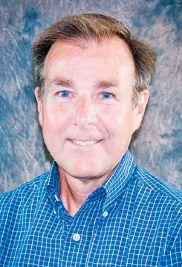

Today’s businesses are more active in workforce development than ever before. Rather than waiting for graduates to show up at their doorsteps, industry partners are helping to prepare students to be knowledgeable workers of the future.
Industry partnerships with higher education institutions provide valuable educational opportunities, making it possible for students to learn on the latest equipment, tools and technology. Many businesses and economic development organizations have also begun student sponsorship programs as a successful way of recruiting and retaining employees.
These initiatives are helping to create high-paying career opportunities for students, while reducing their cost of education. This trend is also giving businesses a head start on the recruitment process and more direct access to graduates who can immediately make a difference in their companies.
Today’s regional workforce shortage can force businesses and industries to hire workers who lack a complete skillset, but M State’s Workforce Development Solutions can custom design the skills and technology training that employers and employees need. Workforce Development Solutions can address a workforce’s skills gaps through training offered on-site, on campus, online or in mobile units.
By partnering with businesses, we customize skills training and can bring our trainers and equipment – including our mobile training trailers – right to the worksite for hands-on training.
M State can provide the training that employers and employees need when they need it.
G.L. Tucker Executive Director
The April reading for the Mid-American economy marks THE 29TH STRAIGHT MONTH the index has remained above growth neutral 50.0, Creighton University reports.
“The regional economy continues to expand at a positive pace. However, as in recent months, finding and hiring qualified workers remained the chief threat to manufacturing economy for the region.
“Approximately 44.7 percent identified labor shortages as the greatest threat to company success in the next 12 months,” said Ernie Goss,director of Creighton University’s Economic Forecasting Group.
Source: Creighton University












